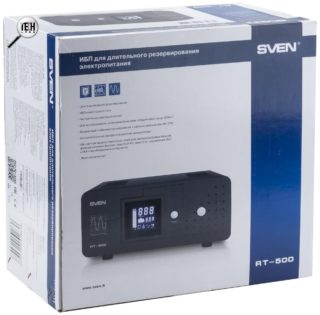Power outages are quite common in new buildings, old houses and especially in the private sector. Substations fail, lines break, safety devices fail. Modern accumulators of electrical energy allow you to comfortably and without prejudice to household appliances to survive these troubles.
Principle of operation
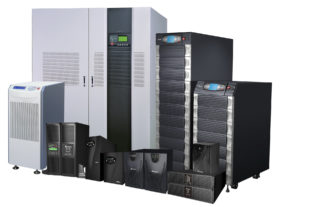
The principle of operation is that in the presence of an external power grid, the inverter passes voltage to consumers, while the built-in charger recharges the battery. In the event of a power outage, the inverter instantly switches to battery operation and converts their DC voltage to AC voltage.
According to their purpose, electricity storage devices are divided into 2 categories:
- uninterruptible power supply (UPS) to ensure the operation of household electrical appliances;
- an uninterruptible power supply for the house in case of a power outage.
Products vary in composition, size, power, cost, and discharge duration. They can be located both inside the building and outside it in separate buildings.
How to choose a battery for your home
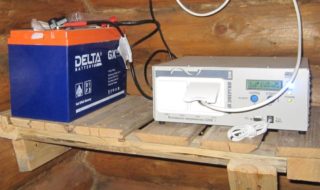
If turning off the light becomes a constant phenomenon, you should think about purchasing an energy storage device for your home. The battery for the computer will not solve the problem, since it has a limited resource. Devices are needed that can ensure the normal functioning of people for several hours, or better - a day. Such a technical helping hand will come in handy in case of large-scale accidents on the line.
The selection criteria are as follows
- the complexity of installation and commissioning;
- shipping and special service charges;
- resistance to temperature and humidity changes;
- Efficiency, in modern devices it reaches 98%;
- service life - 5000-10000 m / h;
- overload capacity (withstanding the load when starting the generator) - 200-300%;
- automatic turn-on time - a good energy storage device for the house in case of a power outage begins the conversion process in 10 ms;
- ability to work at low loads;
- autonomy - a tank designed for a day of engine operation;
- current quality - high-quality energy storage devices deliver current with a deviation from industrial values of no more than 2%;
- number of charge-discharge cycles - not less than 500;
- power - based on consumers with a margin of 30%, but not less than 6 kV;
- generated noise - inverters run silently.
Modern high-power electric energy storage units can provide a house with energy for 1-2 days. When the power supply is restored, they do not need to be turned off, everything happens in automatic mode.
Large home battery
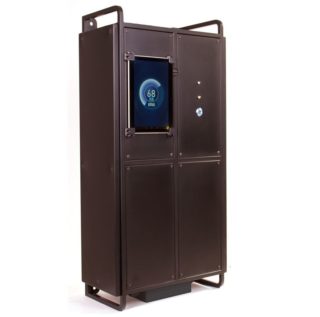
The large Russian-made home battery Ecomotors is an inexpensive and efficient analogue of the Tesla PowerWall drive. The product is used for backup power supply of private houses, summer cottages, offices and other objects that can be disconnected from electricity at any time. It can also be installed in caravans, cabins and mobile canteens. The device stores energy at low rates at night. It has a compact size, it is mounted on the wall in a vertical or horizontal position.
Specifications:
- capacity - 7.8 kW / h;
- battery voltage - 24 V;
- power - 7.2 kW;
- dimensions - 1000 × 500 × 250 mm;
- weight - 100 kg;
- number of cycles - 7000.
The control of the operation and status of the device is carried out using an Android tablet with the ability to display information on a PC or cell phone.
Electricity storage devices for home
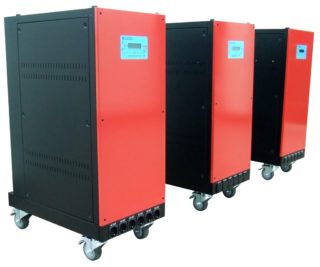
Storage systems for a private house are able to provide power for 24-48 hours. This indicator depends on the completeness of charging, the number of consumers and the capacity of the battery.
The following types of batteries are used:
- Lead acid. Inexpensive, hold a charge well and quickly reach full power.
- Li-ion. They are characterized by low weight, low self-discharge and high capacity.
The choice is determined by their own needs and financial capabilities.
Storage device
Electricity storage devices for home and summer cottages are a system consisting of two functional units that perform a specific task:
- Battery pack. Designed to store energy from an industrial network, a fuel or wind generator, solar panel or water turbine.
- Autonomous inverter. In standby mode, it recharges the battery to the specified value. In the event of a power failure, it switches to the mode of a DC-to-AC converter (220 V or 380 V), supplying it to the internal network of housing.
By location, the devices are divided into built-in, free-standing, floor-standing and wall-mounted.
Typical solution and modernization
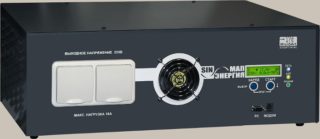
Depending on the needs and the frequency of current interruption, one or more elements are purchased, which are connected in series or in parallel.
For indoor installation, it is better to take AGM and gel models. They are sealed, tolerate full discharge well and do not require maintenance.
Products containing liquid electrolyte emit acid vapors that are hazardous to health. They can only be installed outdoors. Such models wear out quickly with frequent discharges.
The Ecomotors company is constantly working on improving its products. At the same time, it is produced both in series and on order.
The client can purchase a product with the following upgrades and characteristics:
- power;
- capacity;
- current strength;
- voltage;
- duration of work;
- number of phases.
Based on the changes made, the final price is determined.
Application of energy storage devices
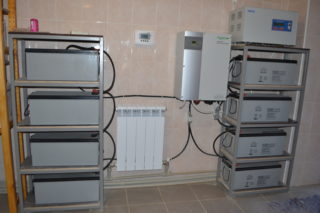
Household and industrial storage devices can be used to increase power, uninterruptible power supply in emergency situations and autonomous power supply of objects not connected to the network.
These can be:
- house;
- country house;
- Cafe;
- workshop;
- pro-slave;
- boiler room;
- water station;
- warehouse;
- garage.
Inverter devices are independent of environmental conditions, but can be recharged from external sources, including during operation.

